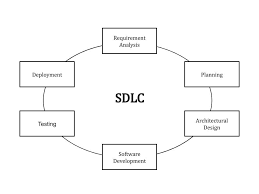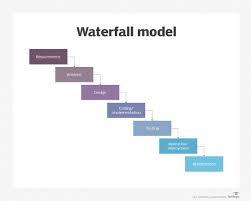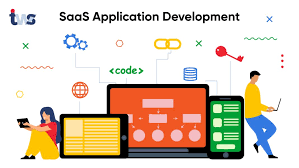Agile software development with Scrum is a popular methodology used by many software development teams. It is an iterative and incremental approach to software development that emphasizes flexibility, collaboration, and customer satisfaction. In this article, we’ll explore what agile software development with Scrum is all about and how it can benefit your team.
What is Agile Software Development with Scrum?
Agile software development with Scrum is a framework for managing and completing complex projects. It was first introduced in 1995 by Ken Schwaber and Jeff Sutherland as an alternative to traditional project management methodologies. The main idea behind agile software development with Scrum is to break down the project into smaller, more manageable tasks that can be completed in short iterations called sprints.
Scrum is a lightweight framework that consists of three roles: the product owner, the Scrum Master, and the development team. The product owner is responsible for defining the project requirements and prioritizing them based on business value. The Scrum Master acts as a facilitator between the product owner and the development team, ensuring that everyone understands their roles and responsibilities. The development team is responsible for delivering high-quality code at the end of each sprint.
Benefits of Agile Software Development with Scrum
Agile software development with Scrum offers several benefits over traditional project management methodologies. One of the biggest advantages of using this methodology is its flexibility. Because it breaks down projects into smaller sprints, it allows teams to adjust their approach based on changing requirements or feedback from stakeholders.
Another benefit of agile software development with Scrum is its emphasis on collaboration. By involving stakeholders in every step of the process, teams can ensure that they are building products that meet their needs. This also helps to build trust between stakeholders and developers, which can lead to better communication and more successful outcomes.
Finally, agile software development with Scrum encourages teams to focus on delivering value early and often. By breaking down projects into smaller sprints, teams can deliver working software to stakeholders at the end of each iteration. This allows stakeholders to provide feedback and make adjustments early in the development process, which can save time and money in the long run.
Conclusion
Agile software development with Scrum is a powerful methodology that can help software development teams deliver high-quality products that meet the needs of their stakeholders. By emphasizing flexibility, collaboration, and customer satisfaction, it offers several advantages over traditional project management methodologies. If you’re looking for a way to improve your team’s productivity and efficiency, consider adopting agile software development with Scrum.
Top 5 FAQs about Agile Software Development with Scrum
- What is the difference between agile and scrum?
- How do I become a certified Scrum Master?
- What are the benefits of using agile and scrum?
- What are the roles in a Scrum team?
- How do I estimate user stories in an agile/scrum environment?
What is the difference between agile and scrum?
Agile and Scrum are related but distinct concepts in software development. Agile is a broader approach to software development that emphasizes flexibility, collaboration, and customer satisfaction. Scrum is a specific framework within the agile approach that provides a structured way to manage projects.
Agile software development involves breaking down large projects into smaller, more manageable tasks that can be completed in short iterations called sprints. The goal of agile is to be able to quickly respond to changing requirements or feedback from stakeholders and deliver working software early and often.
Scrum, on the other hand, is a specific framework for managing and completing complex projects. It consists of three roles: the product owner, the Scrum Master, and the development team. The product owner is responsible for defining the project requirements and prioritizing them based on business value. The Scrum Master acts as a facilitator between the product owner and the development team, ensuring that everyone understands their roles and responsibilities. The development team is responsible for delivering high-quality code at the end of each sprint.
While Scrum is an implementation of agile principles, it is not synonymous with agile. Agile can be implemented using other frameworks or methodologies such as Kanban or Lean Software Development.
In summary, agile software development is a broader approach to software development that emphasizes flexibility and collaboration while Scrum is a specific framework within the agile approach that provides a structured way to manage projects with defined roles and responsibilities.
How do I become a certified Scrum Master?
To become a certified Scrum Master (CSM), you need to follow these steps:
- Attend a Certified Scrum Master Course: The first step in becoming a CSM is to attend a Certified Scrum Master course provided by one of the Scrum Alliance’s approved trainers. During this two-day course, you will learn the principles and practices of Scrum, the roles and responsibilities of the Scrum team, and how to facilitate Scrum events.
- Pass the CSM Exam: After attending the course, you will need to pass an exam to become certified. The exam consists of 35 multiple-choice questions that must be completed within 60 minutes. To pass, you must score at least 24 correct answers.
- Accept the License Agreement: Once you pass the exam, you will need to accept the license agreement and complete your profile on the Scrum Alliance website.
- Maintain Your Certification: To maintain your certification as a CSM, you will need to renew it every two years by earning 20 continuing education units (CEUs) and paying a renewal fee.
In summary, becoming a certified Scrum Master involves attending an approved course, passing an exam, accepting the license agreement, and maintaining your certification through continuing education and renewal fees. By following these steps, you can become a certified Scrum Master and help your team adopt agile software development practices using Scrum methodology.
What are the benefits of using agile and scrum?
Agile and Scrum are popular methodologies used by many software development teams. They offer several benefits over traditional project management methodologies. Here are some of the benefits of using agile and Scrum:
- Flexibility: Agile and Scrum methodologies are designed to be flexible, allowing teams to adapt to changing requirements or feedback from stakeholders. This is because they break down projects into smaller sprints, which allows teams to adjust their approach based on new information.
- Collaboration: Agile and Scrum methodologies emphasize collaboration between stakeholders, developers, and other team members. By involving stakeholders in every step of the process, teams can ensure that they are building products that meet their needs.
- Customer satisfaction: Agile and Scrum methodologies focus on delivering value early and often. By breaking down projects into smaller sprints, teams can deliver working software to stakeholders at the end of each iteration. This allows stakeholders to provide feedback and make adjustments early in the development process, which can lead to better customer satisfaction.
- Transparency: Agile and Scrum methodologies encourage transparency by making all aspects of the project visible to all team members. This includes progress updates, potential roadblocks, and any changes in requirements.
- Continuous improvement: Agile and Scrum methodologies promote continuous improvement by encouraging teams to reflect on their work after each sprint. This allows them to identify areas for improvement and make adjustments before moving on to the next sprint.
Overall, using agile and Scrum can help software development teams improve their productivity, efficiency, and customer satisfaction while also promoting collaboration, transparency, flexibility, and continuous improvement.
What are the roles in a Scrum team?
In a Scrum team, there are three main roles: the Product Owner, the Scrum Master, and the Development Team. Each of these roles plays a critical part in ensuring that the team is working together effectively to deliver high-quality software.
- Product Owner: The Product Owner is responsible for defining and prioritizing the product backlog – a list of features or requirements for the software being developed. They work closely with stakeholders to understand their needs and ensure that the team is building software that meets those needs. The Product Owner is also responsible for accepting or rejecting completed work items and making sure that the team is delivering value to customers.
- Scrum Master: The Scrum Master acts as a facilitator for the team, ensuring that everyone understands their roles and responsibilities within the Scrum framework. They help to remove any obstacles or roadblocks that may be preventing the team from working effectively. The Scrum Master also helps to ensure that meetings are productive and that everyone is following Scrum processes.
- Development Team: The Development Team is responsible for designing, building, testing, and delivering working software at regular intervals called sprints. The Development Team is self-organizing and cross-functional, meaning that they have all of the skills necessary to complete each sprint’s work items without relying on external resources.
It’s important to note that in a Scrum team, there are no traditional project management roles like project manager or team lead. Instead, all members of the team are equal contributors with different responsibilities. This flat structure promotes collaboration and encourages everyone to take ownership of their work items while working towards a common goal of delivering high-quality software.
How do I estimate user stories in an agile/scrum environment?
Estimating user stories is an important part of agile/scrum development. It helps the team to plan and prioritize work, and to communicate progress to stakeholders. Here are some steps you can follow to estimate user stories in an agile/scrum environment:
- Understand the user story: Before you can estimate a user story, you need to understand what it entails. This involves breaking down the story into smaller tasks or sub-tasks, and identifying any dependencies or risks.
- Use relative sizing: Agile/scrum teams often use relative sizing techniques like Planning Poker or T-Shirt Sizing to estimate user stories. These techniques involve assigning a size or value to each story based on its complexity, effort required, and other factors.
- Involve the whole team: Estimating user stories should be a collaborative effort involving the whole team, including developers, testers, and product owners. This ensures that everyone has a shared understanding of what is involved in each story.
- Use historical data: Agile/scrum teams can use historical data from previous sprints or projects to help them estimate new user stories. For example, if a similar story was completed in a previous sprint, the team can use that as a reference point for estimating the new story.
- Re-estimate as needed: User stories should be re-estimated regularly throughout the project as new information becomes available or as priorities change. This allows the team to adjust their plans and ensure that they are on track to meet their goals.
In summary, estimating user stories in an agile/scrum environment involves understanding the story, using relative sizing techniques like Planning Poker or T-Shirt Sizing, involving the whole team in estimation activities, using historical data for reference when possible, and re-estimating regularly throughout the project. By following these steps, agile/scrum teams can effectively plan and prioritize their work while maintaining flexibility and adaptability throughout the development process.




